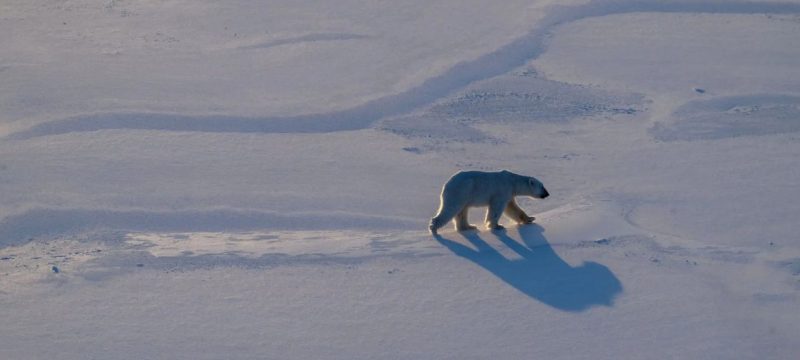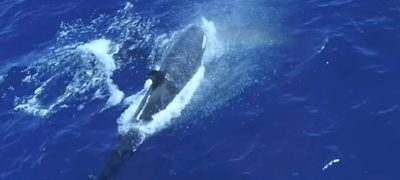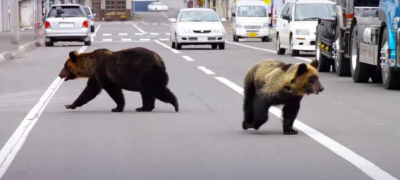A Rapidly Changing Arctic
Arctic climate change is transforming the far north at a speed few places experience. On Svalbard, a Norwegian archipelago near the North Pole, warming is occurring up to seven times faster than the global average. As ice retreats and seasons shift, ecosystems are being forced to rewire themselves.
Underwater, kelp forests now surge into waters that were once frozen year-round, replacing old marine species. On land, reindeer — long adapted to grazing lichens and mosses — now struggle. Cut off from inland pastures by vanishing sea ice, many reindeer are turning to seaweed for survival.
Polar bears, once masters of the ice, are losing vital seal-hunting grounds. Deprived of their platforms, they are moving inland. There, they raid bird nests, hunt reindeer, and sometimes confront humans.
It’s a new world unfolding in real time, and scientists at the Ny-Ålesund International Research Station are racing to record it all — sometimes to their own hazard.
Life at the Northern Frontier
Ny-Ålesund, the world’s northernmost settlement, sits perched on permafrost and fjords. Researchers from many countries live and work here, studying Arctic systems. But they must carry rifles. Polar bear encounters are real dangers. A safety brochure warns: “Stay calm. DO NOT RUN.” If a bear charges, researchers are told to use any deterrents — shovels, ski poles, rocks, blocks of ice, thermos-held water — whatever they can find.
On a crisp spring morning, two scientists dressed in protective gear and armed with rifles and flares set off in a small boat onto the fjord. Their mission: drill sea ice cores to measure thickness, salinity, and temperature. But even that routine work carries heavy risk. Polar bears swim and dive. They approach silently.
Ashild Onvik Pedersen, a scientist who is armed with a rifle in case of polar bear encounters, looking for reindeer near Ny-Alesund, the research settlement on the Svalbard archipelago.
Season after season, the data tell a scary story. Sea ice forms later, melts earlier, and becomes thinner. Snow cover is lighter and more inconsistent. Glaciers that once dominated the landscape have succumbed to melt. The fjord’s dark water absorbs more sunlight than ice, fueling further warming — a classic feedback loop in motion.
Ecosystems in Turmoil
As sea ice recedes, marine microbiology changes too. Cold-adapted bacteria decrease, making way for fast-growing species more suited to warmer water. This “community shift” echoes upward through the food chain.
At the same time, vast kelp forests spread under open water. Ecologist Carlos Smerdou has studied Arctic seaweed for decades. He says these underwater groves are “reorganizing everything” in the marine environment. What were once ice-bound zones are now teeming with new life.
Interestingly, reindeer have started feeding on kelp washed ashore. Ashild Onvik Pedersen, a Norwegian ecologist and dog musher, has witnessed reindeer nibbling seaweed along the coast. It is a survival food, she says — nutritious, perhaps, but far inferior to their natural diet.
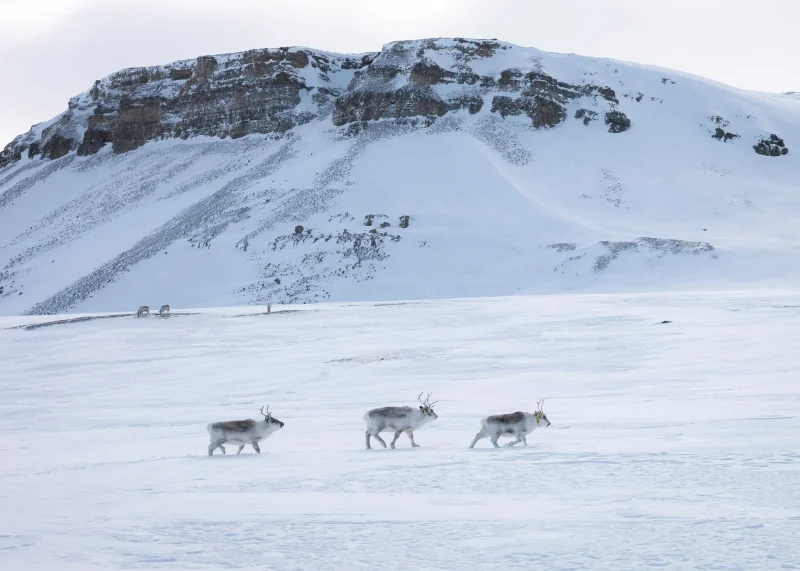
The shift is far from uniform. In Svalbard’s inland valleys, herds of reindeer have exploded. Warmer summers elongate the growing season, producing more vegetation. In some sheltered valleys, reindeer populations have nearly quadrupled since the early 2000s.
Pedersen calls this divergence across the landscape a glaring sign of disruption: formerly connected ecosystems are fracturing.
Adaptation or Hunger for the Apex Predators
Elsewhere, polar bears are adapting — or trying to. With fewer seal hunting opportunities, many bears now rely on land prey. Some employ climbing and ambushing techniques. A bear might scale cliffs beneath a reindeer, forcing the animal upward until it stumbles and falls. Others sprint downhill unexpectedly. Some bears chase reindeer into water and try to outswim them.
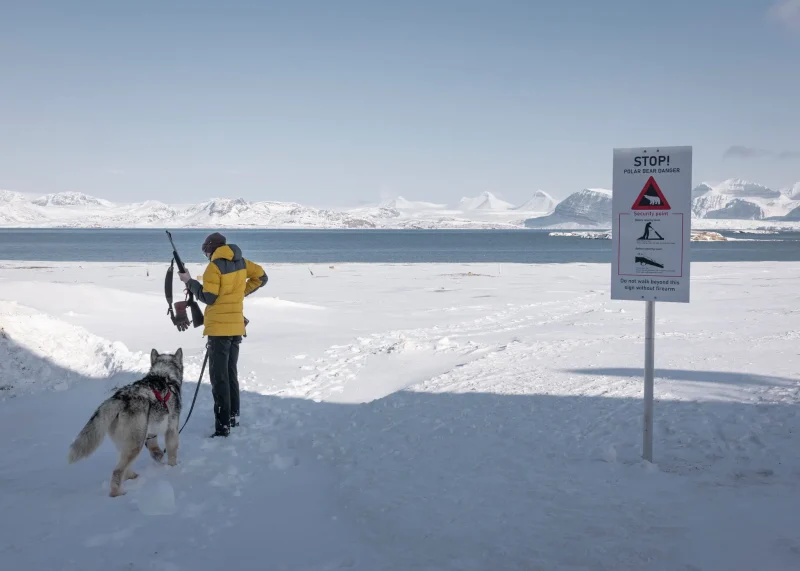
Warning of polar bear danger outside the research settlement at Ny-Alesund.
But this diet shift comes with danger. Eggs in seabird colonies are an easy target. If a bear arrives before nesting season, it may wipe out up to 90 percent of nests. In the past decade, human–bear encounters have surged near Ny-Ålesund. Armed guards now patrol the settlement’s perimeter. In July, a young male bear was shot and killed after it threatened human safety.
Since 1973, polar bear hunting has been banned in Svalbard, and the population rebounded. But as the balance of ice and land changes, bears roam more broadly — even reclaiming areas they left long ago. Today, Svalbard is considered one of the most promising places to still see polar bears.
Still, researchers caution: nutritional stress may rise. If bears eat fewer seals over time, will eggs, reindeer meat, or seaweed suffice? In Hudson Bay, where ice-free seasons have lengthened significantly, polar bear populations are already plunging.
Jon Aars, a Norwegian ecologist with two decades of study, expresses cautious hope. “Some ecosystems will survive or evolve,” he says. “I believe polar bears will persist in parts of the Arctic, though much of what we know today may vanish.”
Human Risk, Fragile Science
The scientists themselves live with tension. Food arrives only by weekly cargo ship, bringing fresh produce to the isolated base. Walking between labs and cabins requires vigilance. Outside, the snow reveals fresh bear paw prints — perhaps missed by half an hour. Trips to outlying sites require rifles and constant watch.
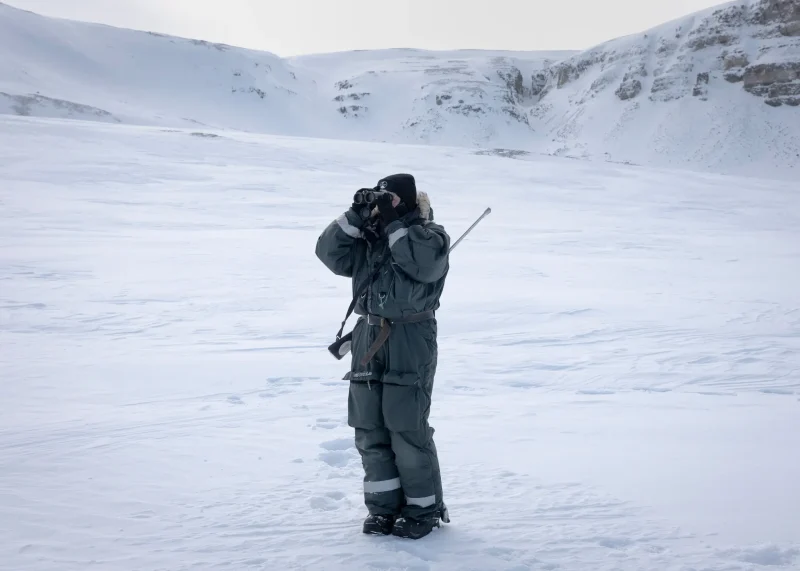
Inside the research stations, meals are communal: boots by the door, coats hung in hallways, the hum of languages from around the world. Behind every observation is a reminder — in a climate-altered Arctic, both humans and animals are scrambling to adapt.
In other news also read about Methane Leaks Discovered in Antarctica Raise Fears of Faster Global Warming


